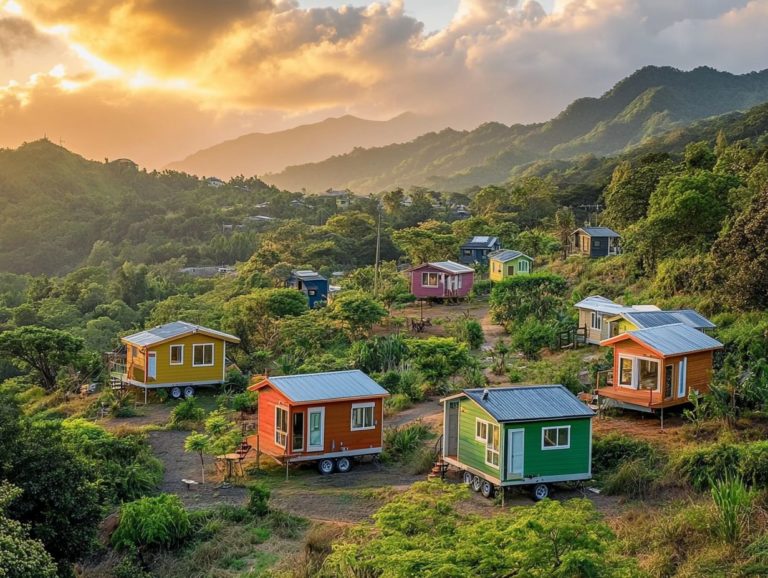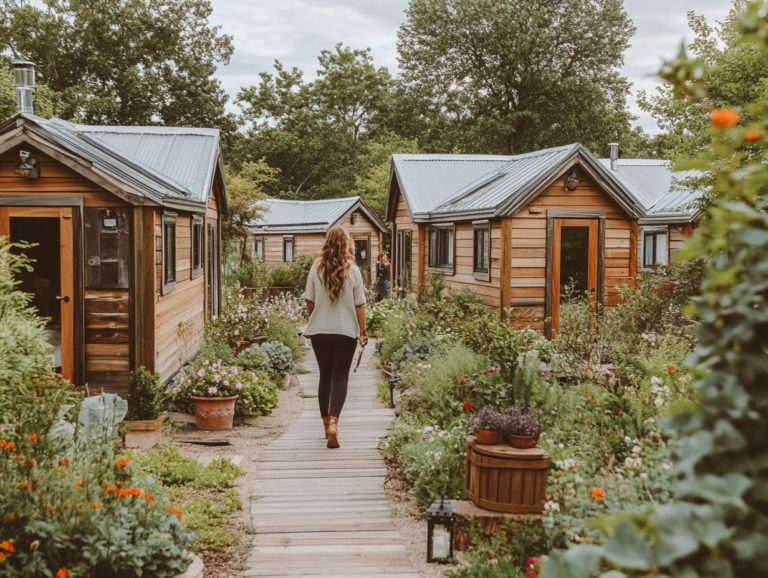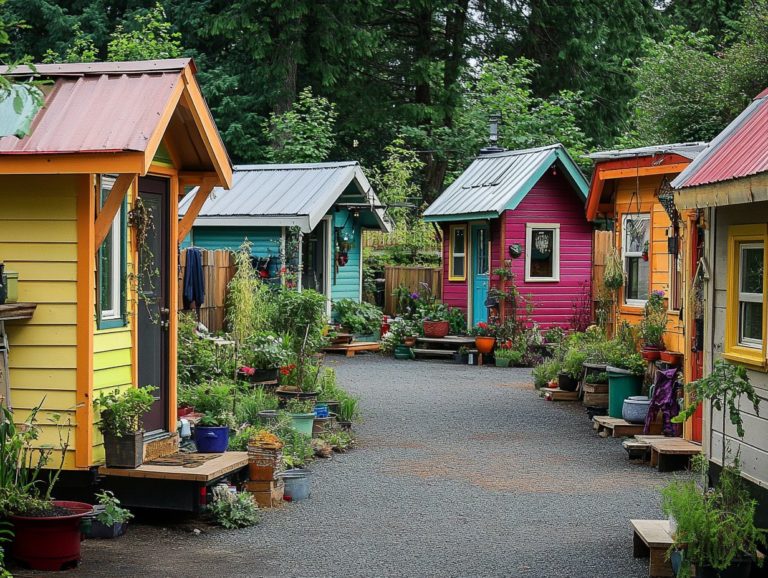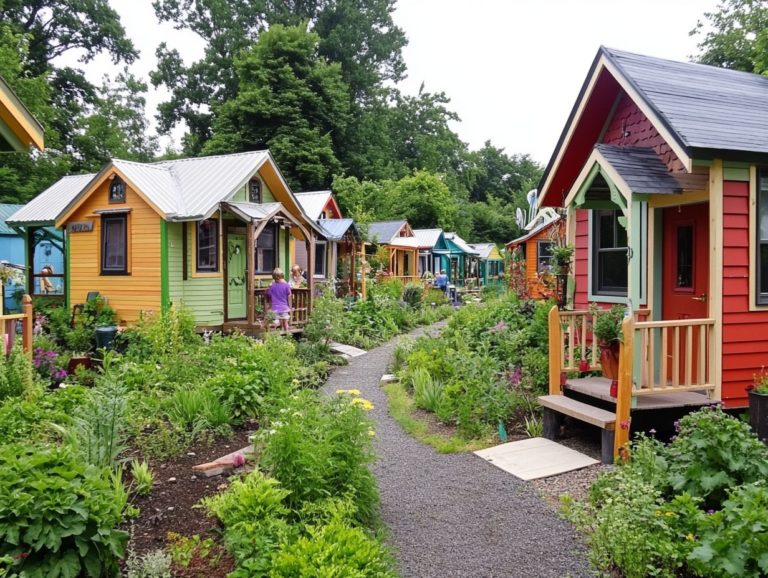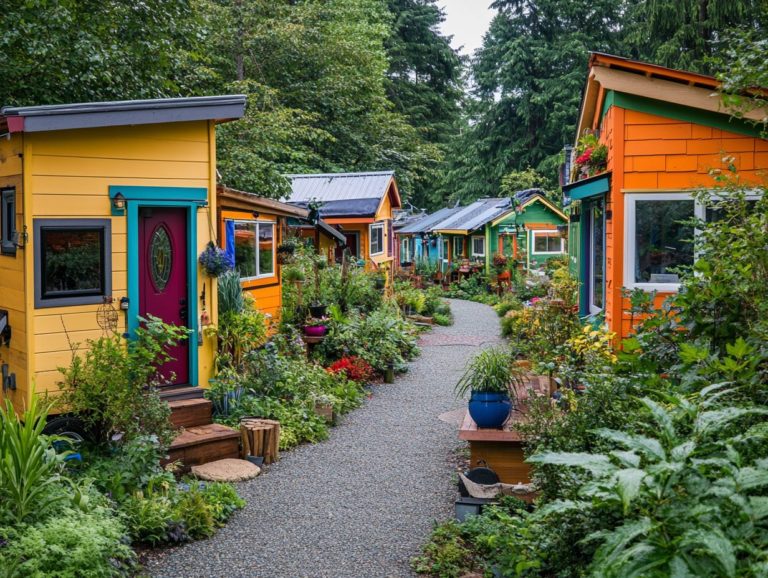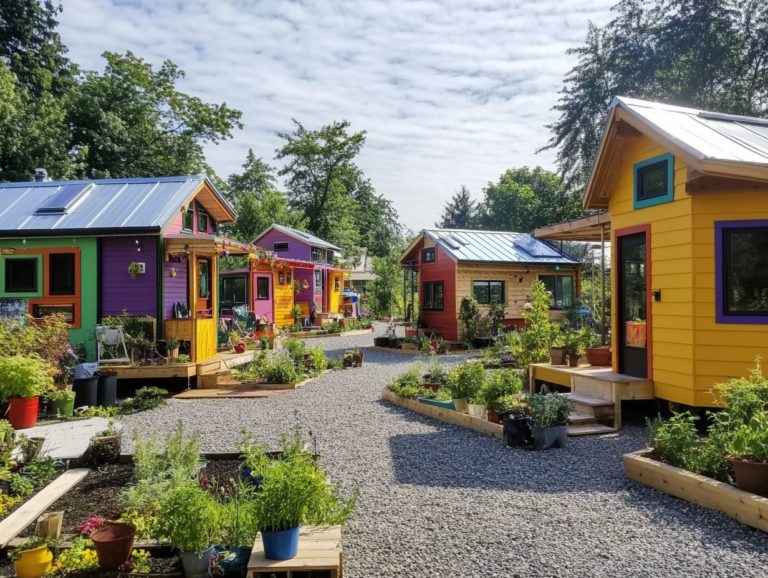The Rise of Tiny House Villages
Tiny house villages are captivating the imagination of those in search of affordable, sustainable living solutions.
These communities present a distinctive blend of simplicity and social connection, appealing to individuals eager to downsize and adopt a more minimalist lifestyle.
Delve into the reasons behind the rising popularity of tiny house villages, the different types available, the benefits they offer, and the challenges they encounter.
Whether you re contemplating joining one of these communities or are simply intrigued by this trend, you ll uncover valuable insights here.
Contents [hide]
- Key Takeaways:
- Reasons for the Popularity of Tiny House Villages
- Types of Tiny House Villages
- Benefits of Living in a Tiny House Village
- Challenges and Controversies Surrounding Tiny House Villages
- How to Join or Start a Tiny House Village
- Frequently Asked Questions
- What are tiny house villages?
- Where did the concept of tiny house villages originate?
- How are tiny house villages different from traditional communities?
- What is fueling the rise of tiny house villages?
- Are tiny house villages a permanent housing solution?
- What are the benefits of living in a tiny house village?
Key Takeaways:
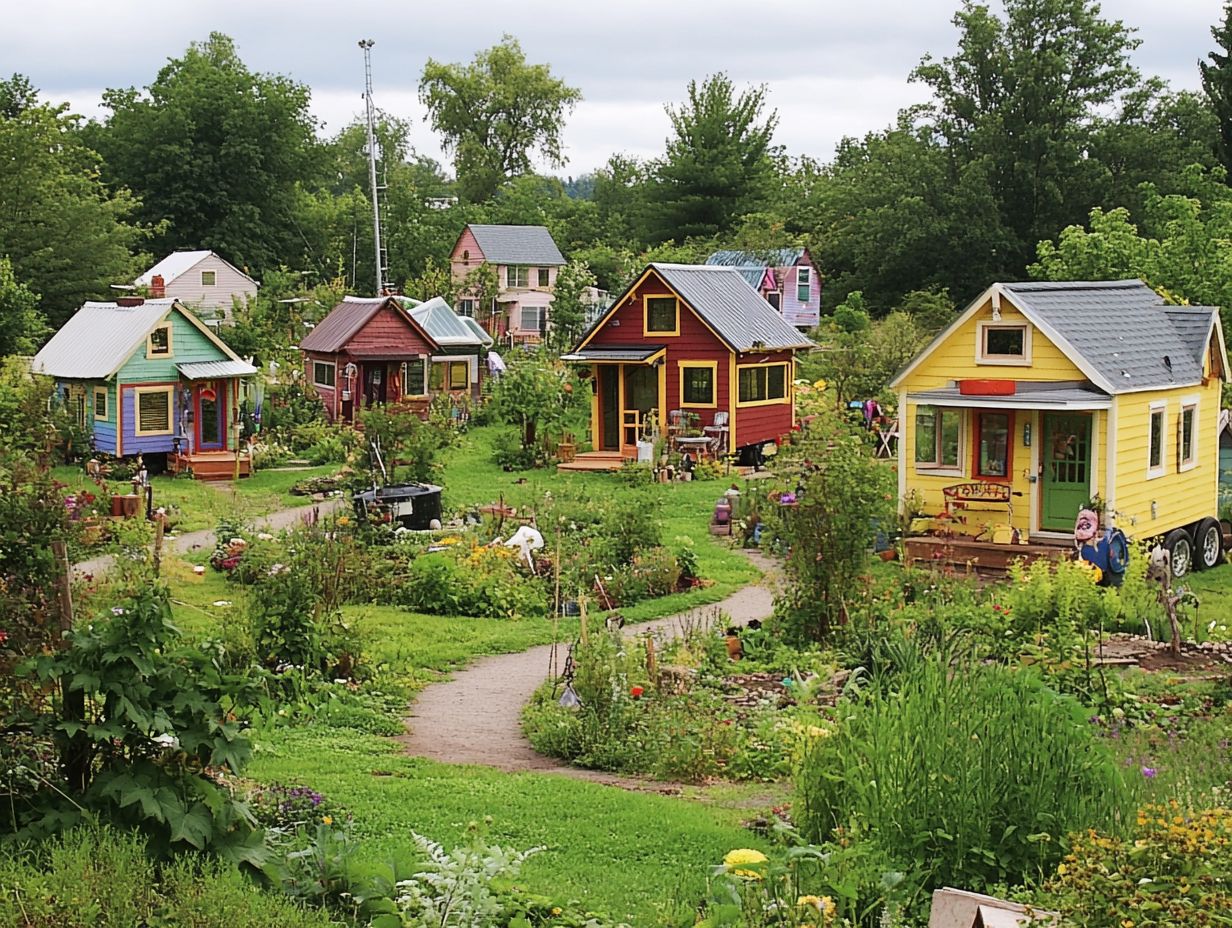
- Tiny house villages provide an affordable housing option to address cost and environmental concerns.
- There are two main types of tiny house villages: community-based and individual ownership, each with unique pros and cons.
- Living in a tiny house village fosters social connections but faces challenges such as zoning laws.
Defining Tiny House Villages
Tiny house villages represent a new way of living that combines tiny houses with a strong sense of community. These distinctive settlements emphasize sustainable practices.
With their allure of low-cost homes and modular construction, tiny house villages emerge as a practical response to the homelessness crisis seen in regions such as California, Oregon, and New Zealand.
The thoughtfully designed layouts often incorporate shared spaces, fostering a vibrant sense of community among residents. These areas encourage social interaction and collective activities, nurturing collaboration and support within the village.
Non-profit organizations play a pivotal role in facilitating these developments, providing essential resources and guidance to ensure that projects meet sustainability objectives.
Tiny house villages significantly contribute to reducing carbon footprints by utilizing renewable materials and energy-efficient systems. This movement not only addresses housing shortages but also inspires a lifestyle centered on minimalism, community, and ecological responsibility.
Reasons for the Popularity of Tiny House Villages
The popularity of tiny house villages has surged in recent years, fueled by a blend of societal shifts and economic pressures, particularly the ongoing homelessness crisis and the urgent demand for affordable housing.
As you navigate the evolving landscape of sustainable living, the tiny-house movement stands out as an appealing solution, presenting community-oriented living arrangements that foster connection and cooperation among residents.
Affordability and Sustainability
Affordability and sustainability lie at the core of the tiny-house movement, presenting a compelling option for those grappling with the homelessness crisis while simultaneously seeking eco-friendly alternatives.
Living in a tiny house means enjoying significantly lower utility costs, as these compact structures demand less energy for heating and cooling compared to traditional homes. You ll likely notice your monthly bills shrinking, allowing you to allocate funds to other essential needs or even build up your savings.
Many tiny houses are crafted from eco-friendly materials, like reclaimed wood and high-efficiency insulation, further enhancing their energy efficiency.
By incorporating renewable energy sources such as solar panels, you can dramatically reduce reliance on conventional power grids. Embracing a tiny house lifestyle not only alleviates financial burdens but also harmonizes beautifully with an eco-conscious approach to living.
Don t miss out on this growing trend! Explore your options today and be part of the solution!
Types of Tiny House Villages
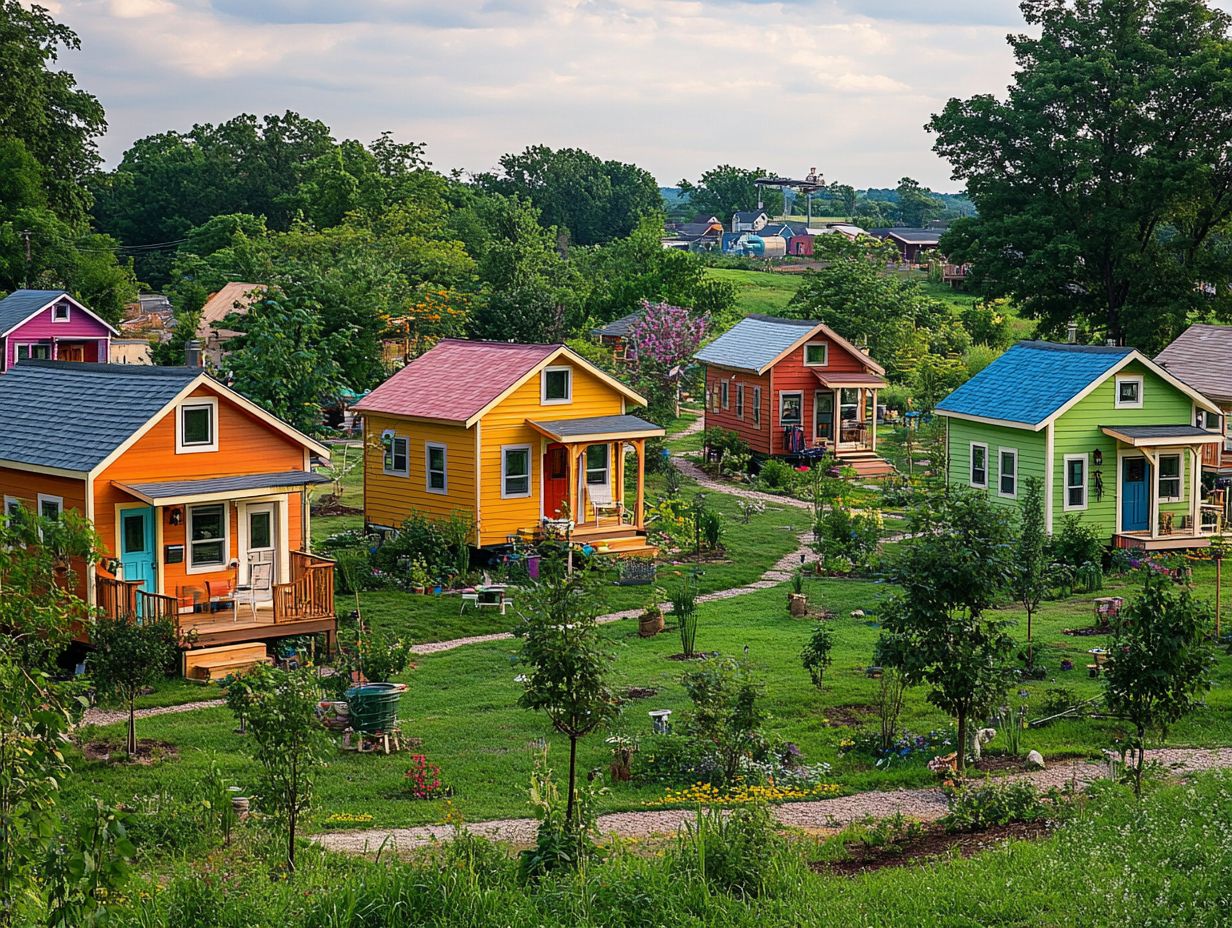
Tiny house villages present a variety of options, each carefully designed to cater to the unique needs of their residents. Whether you seek a community-focused living arrangement or a micro-apartment nestled in the heart of an urban landscape, these villages offer transitional housing housing that helps people move from one living situation to another that accommodates various financial circumstances and lifestyle preferences.
This diversity enhances the allure of the tiny house movement.
Community-based vs. Individual Ownership
Community-based living in tiny house villages offers a striking contrast to individual ownership. It creates social dynamics that significantly shape your experience as a resident. In these community-oriented setups, you share resources and support one another, cultivating a sense of interconnected living that deepens social bonds.
This collaborative approach often grants you easier access to shared amenities like communal gardens, kitchens, and workshops. It enhances sustainability while reducing overall costs. You benefit from the pooling of diverse skills and knowledge, fostering a vibrant and supportive atmosphere.
This communal lifestyle encourages strong social ties. However, it can also present challenges, such as conflicts over shared spaces and varying levels of privacy.
On the flip side, individual ownership provides autonomy and personal space, which many find appealing. However, it may lack the sense of community and collaborative spirit characteristic of shared living, potentially leading to feelings of isolation.
Each living style presents its own unique implications for your lifestyle and interpersonal relationships.
Benefits of Living in a Tiny House Village
Residing in a tiny house village presents an array of benefits that go far beyond just financial savings. You ll find exciting social and environmental benefits that truly embody the essence of sustainable living!
By embracing a community-oriented lifestyle, you cultivate meaningful connections that enrich your social well-being. Simultaneously, you adopt eco-friendly practices that significantly diminish your overall environmental footprint.
Social and Environmental Benefits
Tiny house villages offer extraordinary social benefits. They cultivate a tight-knit community among residents while also promoting positive environmental impacts through sustainable living practices. These living arrangements encourage collaboration and facilitate the sharing of resources, significantly enhancing the overall quality of life for everyone involved.
This sense of community fosters robust support networks and drives increased volunteerism and participation in local events. For example, a study conducted in Austin, Texas, revealed that residents in tiny house communities experienced a remarkable 30% uptick in civic involvement compared to those living in traditional housing.
On the environmental front, these compact homes typically adhere to eco-friendly building standards, leading to an impressive 45% reduction in overall carbon footprints. Shared resources, such as communal gardens and tools, enhance efficiencies in water and energy usage, positioning these villages as exemplary models of sustainable living that benefit both individuals and the planet.
Challenges and Controversies Surrounding Tiny House Villages
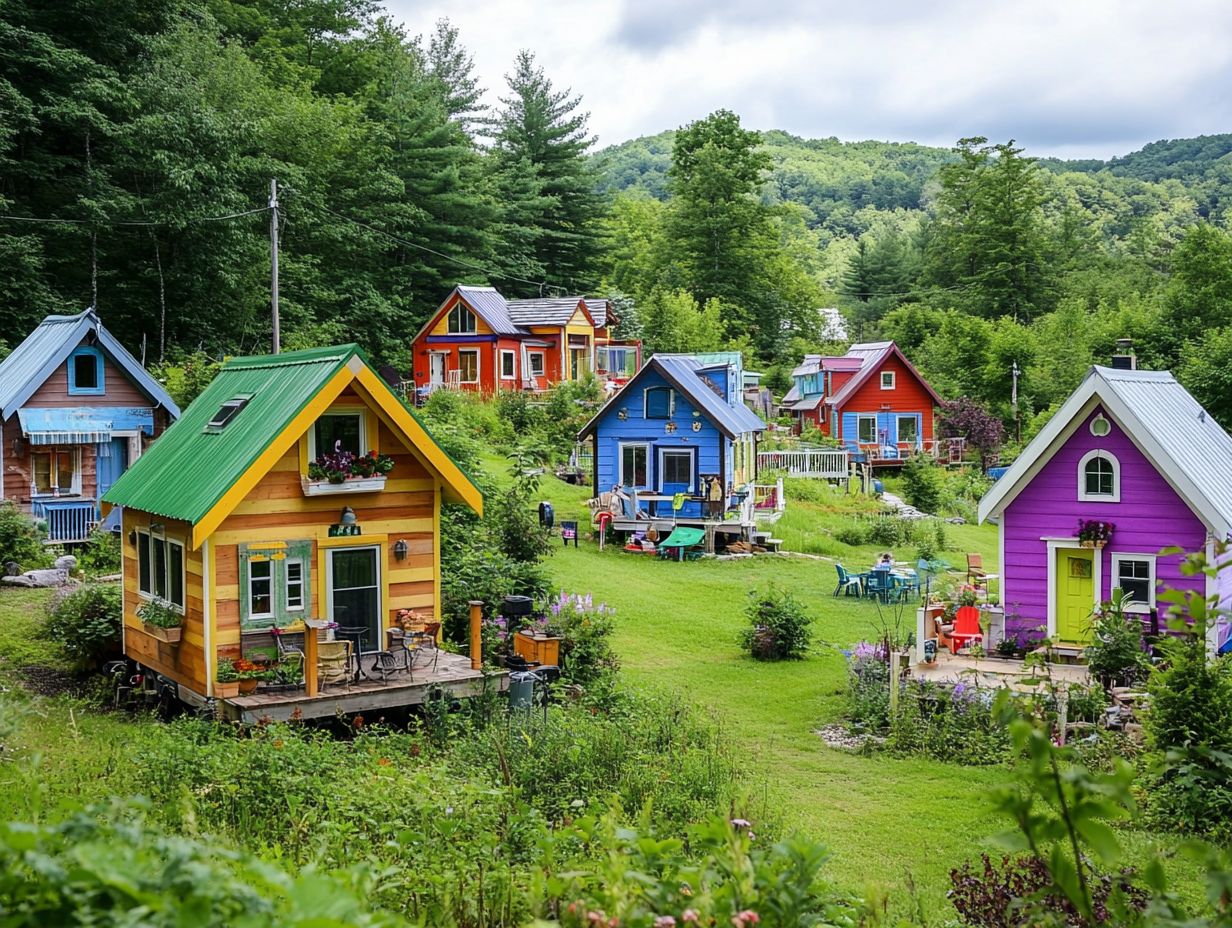
Despite their rising popularity, tiny house villages encounter a range of challenges and controversies that can impede their growth. Zoning regulations and building codes often present significant hurdles, giving rise to legal issues that complicate the establishment of these innovative communities in diverse regions, including urban areas of California and Oregon.
Explore the benefits of tiny house living today!
Zoning and Legal Issues
Zoning regulations, which are rules set by local authorities on how land can be used, and legal issues are key factors influencing tiny house villages. These factors often create significant barriers for those seeking affordable housing solutions amidst the homelessness crisis.
Challenges can vary greatly based on local building codes and municipal policies. In cities like Portland, Oregon, and Austin, Texas, neighborhood zoning laws often categorize tiny homes as temporary or transient structures, rather than long-term homes.
Advocates argue that such classifications are outdated, especially considering innovative designs that promote sustainability and community living. Organizations like the American Tiny House Association are actively working to influence policy changes, urging cities to reevaluate their zoning frameworks.
Progress is being made; for example, Washington State has enacted legislation to legitimize tiny house developments as viable housing options. This illustrates a potential blueprint for other regions to emulate.
As the demand for affordable housing grows, cities must act swiftly to change outdated zoning laws.
How to Join or Start a Tiny House Village
Joining or starting a tiny house village can be transformative, whether you seek a community-focused lifestyle or wish to help alleviate the homelessness crisis.
With thoughtful planning and collaboration, you can engage in shelter programs or partner with non-profit organizations to create supportive environments that promote sustainable living.
Steps and Considerations
Starting a tiny house village involves several critical steps and considerations. First, understanding building codes is essential.
Next, you ll need to establish agreements that foster community-oriented living. These elements are crucial for creating a thriving and sustainable tiny house community.
- Begin by conducting thorough research into local building regulations and zoning laws, as these will significantly influence the design and layout of your village.
- Engaging with local government to secure the necessary permits is crucial at this early stage.
- Gather feedback from potential residents and other stakeholders, as this collaboration will lay the groundwork for a cohesive community.
Planning for shared resources and communal spaces is key. Creating communal spaces will spark connections and build a sense of belonging among villagers.
Ultimately, a well-thought-out vision tackles both legal and logistical challenges while nurturing a supportive and vibrant tiny house community.
Frequently Asked Questions
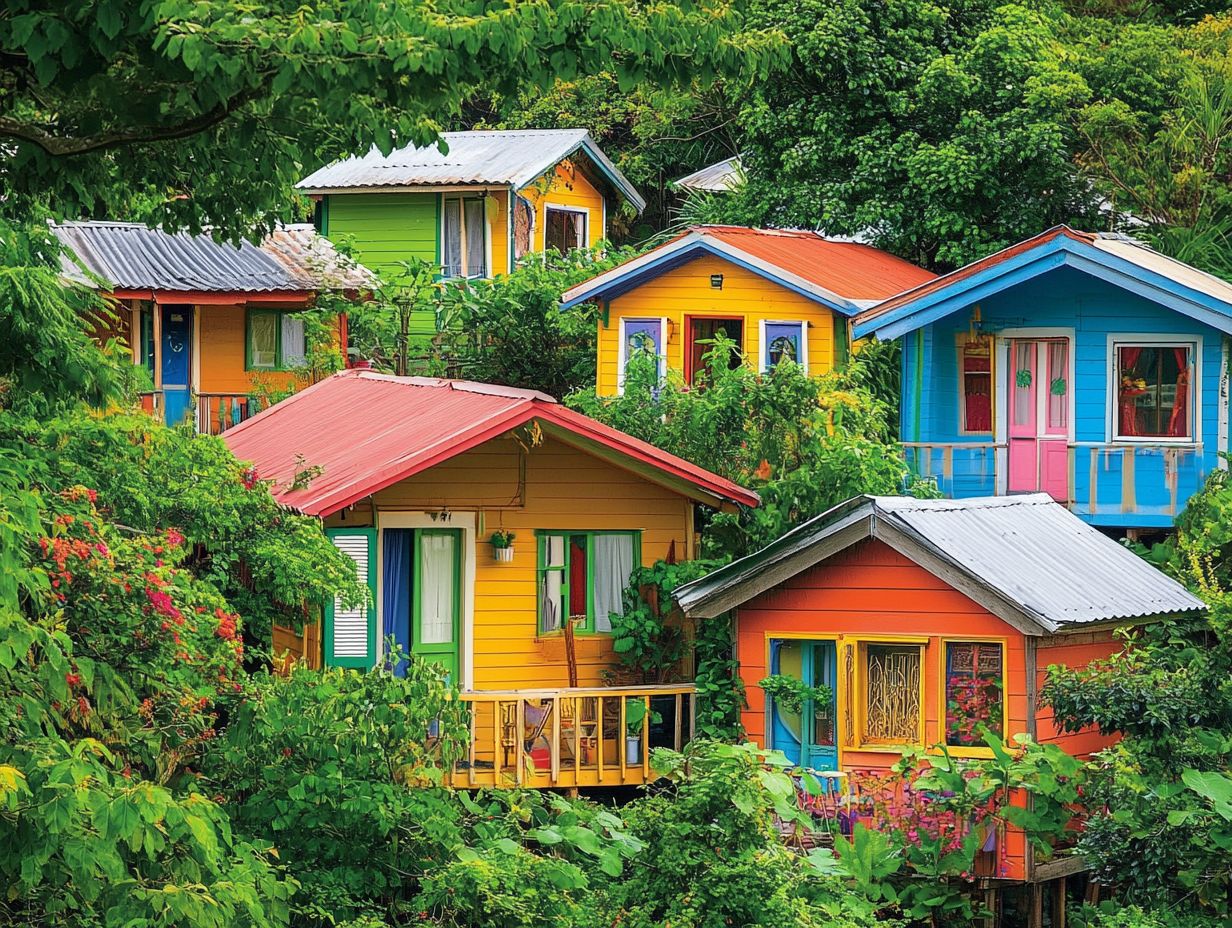
What are tiny house villages?
Tiny house villages are communities of small homes, often less than 400 square feet. These villages emphasize sustainability and minimalism, drawing inspiration from the works of Lloyd Kahn and Sarah Susanka.
Where did the concept of tiny house villages originate?
The concept of tiny house villages originated in the United States, specifically in the Pacific Northwest. It was primarily driven by the housing crisis and the need for affordable, sustainable housing options.
How are tiny house villages different from traditional communities?
Tiny house villages focus on small, sustainable living. They prioritize communal spaces and a strong sense of community over individual homes and privacy.
What is fueling the rise of tiny house villages?
The rise of tiny house villages is driven by the push for sustainable living, the need for affordable housing, and a lifestyle shift towards owning less. Influential figures like Jay Shafer and organizations such as Tumbleweed Tiny House Company have popularized this movement.
Are tiny house villages a permanent housing solution?
Tiny house villages can be a permanent housing option for some. They also provide transitional or temporary housing for individuals facing homelessness in places like California, Oregon, and New Zealand.
What are the benefits of living in a tiny house village?
Living in a tiny house village offers exciting benefits like reduced living costs, a tight-knit community, and a smaller environmental footprint. Embracing this lifestyle aligns with the ideals expressed in Walden by Henry David Thoreau.

